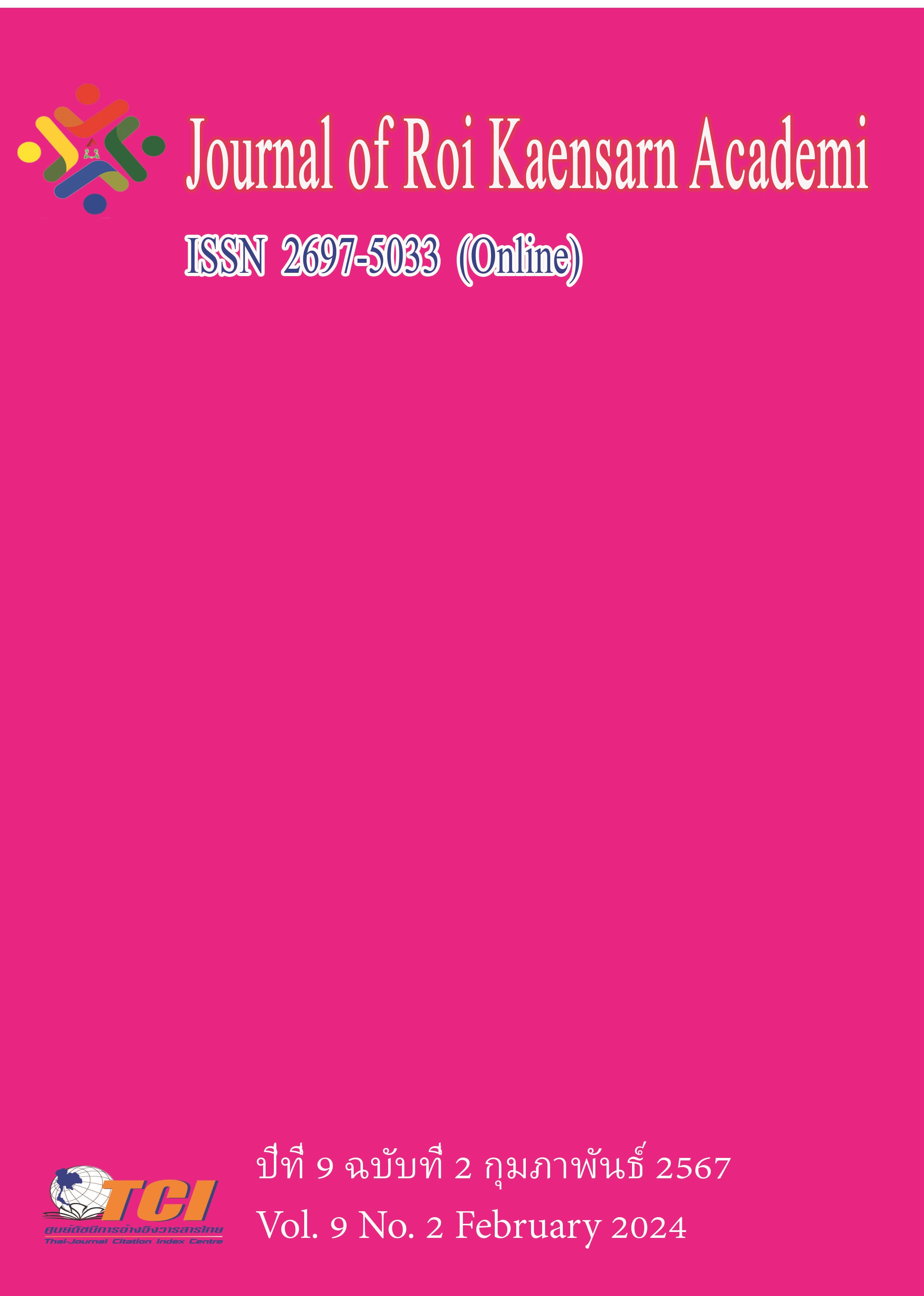The Vocal Teaching in Early Childhood For Early Childhood Teachers of Nantong Normal College
Main Article Content
บทคัดย่อ
From the study of problems in teaching vocal in early childhood education. The researcher therefore wanted to study the methods and contents of vocal teaching for early childhood teachers in the School of Music and Dance, Nantong Normal College. It was found that vocal teaching is a vital aspect of early childhood education, focusing on developing sound vocal technique, providing advice on repertoire selection and performance, and fostering musical cognitive skills. Teachers use paralinguistic techniques to communicate attitudes and emotions, and research shows that children's compositions represent awareness and are linked to musical cognitive skills. Vocal parenting nurtures singing, fostering musical cognitive skills and creativity. Acceptance and Commitment Therapy (ACT) for confidence in singing, rhythmic activities, and rotating lessons improve intonation skills. Vocal teaching also develops literacy skills through singing and playing, requiring proper vocal control and breath training.
Article Details
เอกสารอ้างอิง
Brahmstedt, H., & Brahmstedt, P. (1997). Music Education in China: A look at primary school music education in China reveals numerous recent develop-ments in general music, band and string programs, and private lessons. Music Educators Journal, 83(6), 28-52. https://doi.org/10.2307/3399021
Caralyn, B. (2022). The Theory and Practice of Voice in Early Childhood. “Theorising spaces, places, skills and tools for voice work in early childhood”. Routledge. doi: 10.4324/9780429259630-14
Davies, C. (1992). Listen to my song: a study of songs invented by children aged 5 to 7 years. British Journal of Music Education, 9, 19 - 48.
Gaoxiang, J. (2022). Reflections on the Innovation of Vocal Music Teaching in Vocational Colleges under the Current Situation. This article was published in "Art Review", 4(13), 121-124.
Gumiandari, S. (2021). “Contemporary Early Childhood Education and Care Teacher Training in China”. International Perspectives on Early Childhood Teacher Education in the 21st Century. Springer Singapore; Singapore. 31-48. doi: 10.1007/978-981-16-5739-9_3
Huan, Xu. (2022). Teaching Practice and Research of Vocal Music Course - Taking Vocal Music Teaching in Higher Vocational Preschool Education as an Example. China Academic Journal Electronic Publishing House, 2(3), 184-186.
Jiaxiong, Zhu. (2008). Early childhood teacher education in China, Journal of Education for Teaching, 34(4), 361-369, DOI: 10.1080/02607470802401552
Lau, W.-T. (2007). Teaching Chinese Folk Songs with an Authentic Approach. Music Educators Journal, 94(2), 22-27. https://doi.org/10.1177/002743210709400206
Lei, Y. (2022). Discussion on the Teaching Strategy of Children’s Song Singing in Early Childhood art Education. Learning & Education, 10(5), 89. doi: 10.18282/l-e.v10i5.2682
Loane, B. (1984). Thinking about Children's Compositions. British Journal of Music Education, 1(3), 205-231. doi:10.1017/S0265051700000450
Mingming, S. (2016). Current situation and problems of music vocal teaching in primary schools in China. Expert Systems with Applications, 82(4), 252-265.
Ouyang, Y. (2012). Westernisation, Ideology and National Identity in 20th-Century Chinese Music. (PhD, Dissertation, Royal Holloway, University of London). https://repository.royalholloway.ac.uk/file/8f19c444-ee12-c022-d86c-879118683355/7/2012OuyangYPhD.pdf.
Pan, Y., Wang, X., & Li, L. (2018). Early Childhood Education and Development in China. In M. Fleer, & B. van Oers (Eds.), International Handbook of Early Childhood Education. (Vol. 1, pp. 599-622). Springer.
Patricia J. F. & Deborah D. (1990). Pitch-Pattern Accuracy, Tonality, and Vocal Rangein Preschool Children's Singing. Journal of Research in Music Education, 38 (2), 102-114. Published By: Sage Publications, Inc.
Rahman, A. (2016). Models of English Songs Textbook in Primary and Junior High School Students. LINGUISTIK: Jurnal Bahasa dan Sastra, 1(1), 39-47. doi:http://dx.doi.org/10.31604/linguistik.v1i1.%p
Roels, J. M., & Van Petegem, P. (2016). Children composing and the tonal idiom. International Journal of Music Education, 34(3), 324-339. https://doi.org/10.1177/0255761415619067
Sari, D. K., Nasution, S. Z., Ginting, S., & Pramesona, B. A. (2023). Literature Review: Implications of Acceptance and Commitment Therapy (ACT) on Anxiety in Schizophrenic Patients. Jurnal Kesehatan, 14(1), 198-203.
Tao, Y., Lee, C. T., Hu, Y. J., & Liu, Q. (2020). Relevant Work Factors Associated with Voice Disorders in Early Childhood Teachers: A Comparison between Kindergarten and Elementary School Teachers in Yancheng, China. International journal of environmental research and public health, 17(9), 3081. https://doi.org/10.3390/ijerph17093081
Tyasrinestu. F. (2020). The use of health themes vocabulary in the creation of children's song lyrics. Resital:Jurnal Seni Pertunjukan, 22(3), 180-186. DOI: https://doi.org/10.24821/resital.v22i3.5227
Xiao, H. (2022). The role and development of chorus in music education in colleges and universities. Popular Literature and Art. 4(07), 230-240.
Xiaohui, L. (2015). The practice of effective vocal teaching in primary a secondary school music classes. Instrumentation Science & Technology, 49(1), 65-80.

